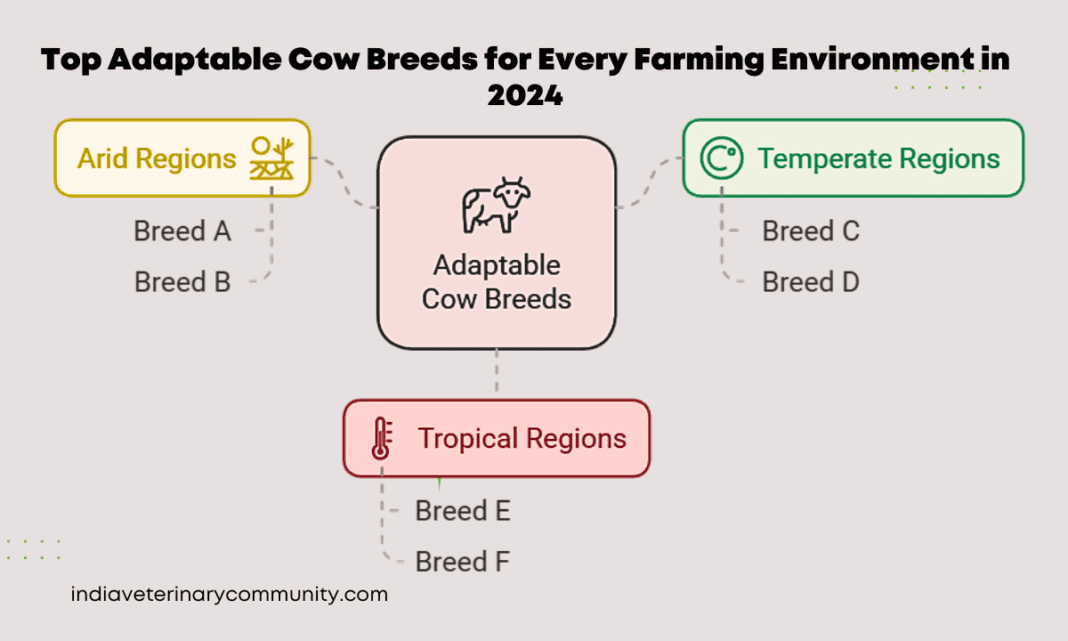Now, let’s get to the good stuff – the best apartment dog breeds for 2024! These pups have proven themselves to be excellent companions for small space living.
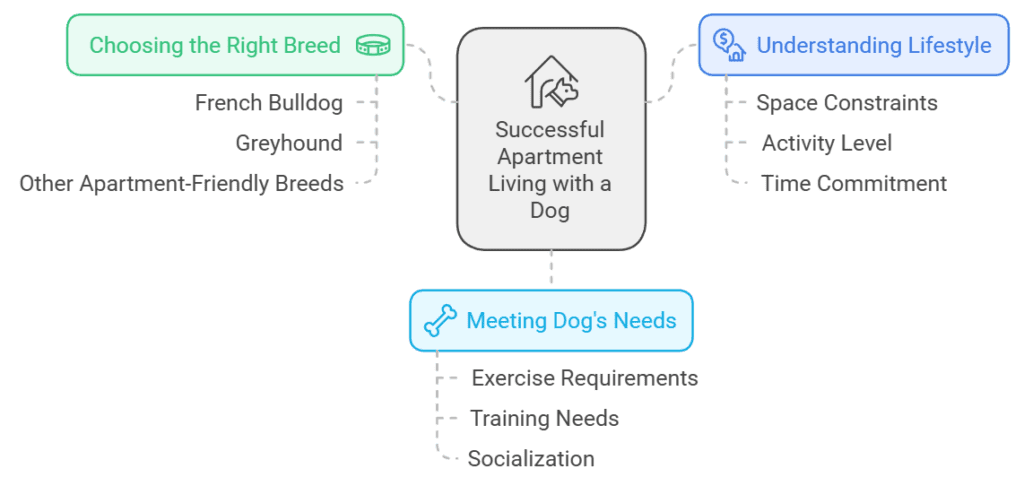
1. French Bulldog:
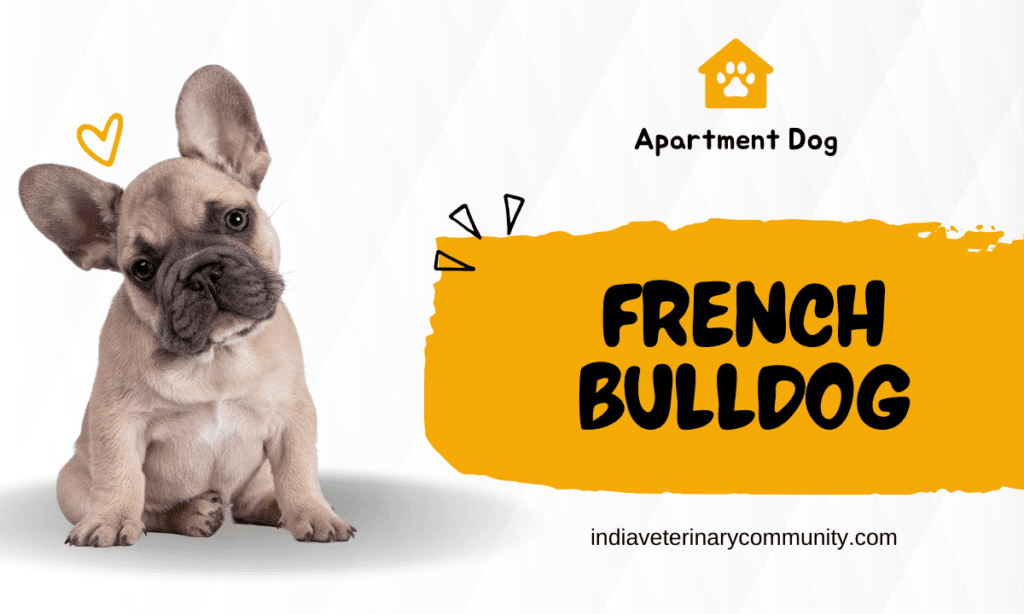
- Size: Small, typically 11-13 inches tall and under 28 pounds
- Energy level: Low to moderate
- Grooming needs: Minimal
- Personality: Affectionate, adaptable, and great with families
- Why they’re great apartment dog breeds: Frenchies are compact, low-energy, and about as loud as a whisper. Plus, their smushy faces are perfect for Instagram-worthy shots against your stylish apartment backdrop!
2. Cavalier King Charles Spaniel
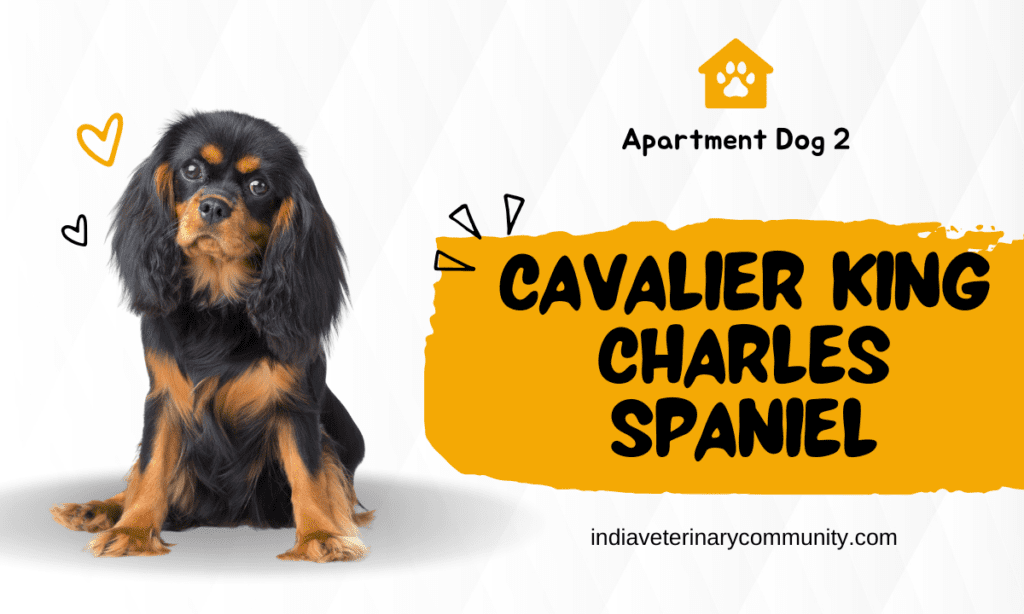
- Size: Small, usually 12-13 inches tall and 13-18 pounds
- Energy level: Low to moderate
- Grooming needs: Moderate
- Personality: Gentle, affectionate, and great with children
- Why they’re great apartment dog breeds: These regal pups are adaptable, gentle, and always up for a snuggle session on the couch. They’re perfect for those seeking a cuddly lapdog that won’t go bonkers in your apartment.
3. Bichon Frise
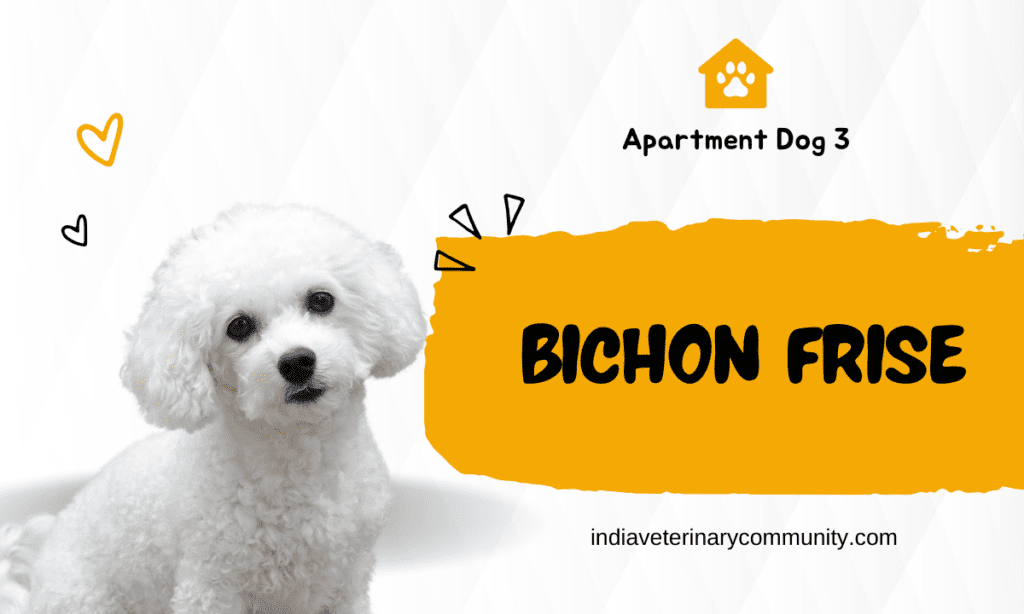
- Size: Small, typically 9-11 inches tall and 12-18 pounds
- Energy level: Moderate
- Grooming needs: High
- Personality: Playful, cheerful, and good with other pets
- Why they’re great apartment dog breeds: These fluffy little clouds are like living, breathing stress balls. They’re cheerful, adaptable, and don’t shed much – a huge plus when you’re dealing with limited cleaning space in an apartment.
4. Pug
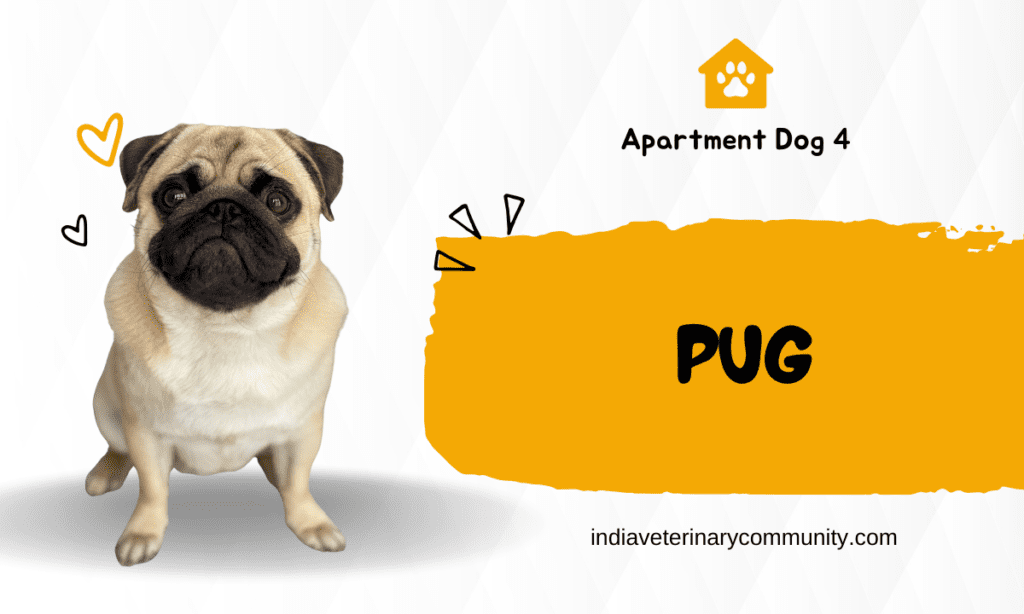
- Size: Small, usually 10-13 inches tall and 14-18 pounds
- Energy level: Low
- Grooming needs: Moderate
- Personality: Charming, mischievous, and loving
- Why they’re great apartment dog breeds: Pugs are known for their easy-going nature and love of lounging. They’re content with short walks and lots of cuddle time, making them ideal for apartment living.
5. Shih Tzu

- Size: Small, typically 9-10.5 inches tall and 9-16 pounds
- Energy level: Low to moderate
- Grooming needs: High
- Personality: Affectionate, playful, and outgoing
- Why they’re great apartment dog breeds: These little “lion dogs” are adaptable, quiet, and don’t need much exercise beyond short walks and playtime.
Rajapalayam Dog: A Symbol of India’s Rich Heritage and Loyalty
Caring for Your Mudhol Hound: Essential Tips for Owners
6. Greyhound
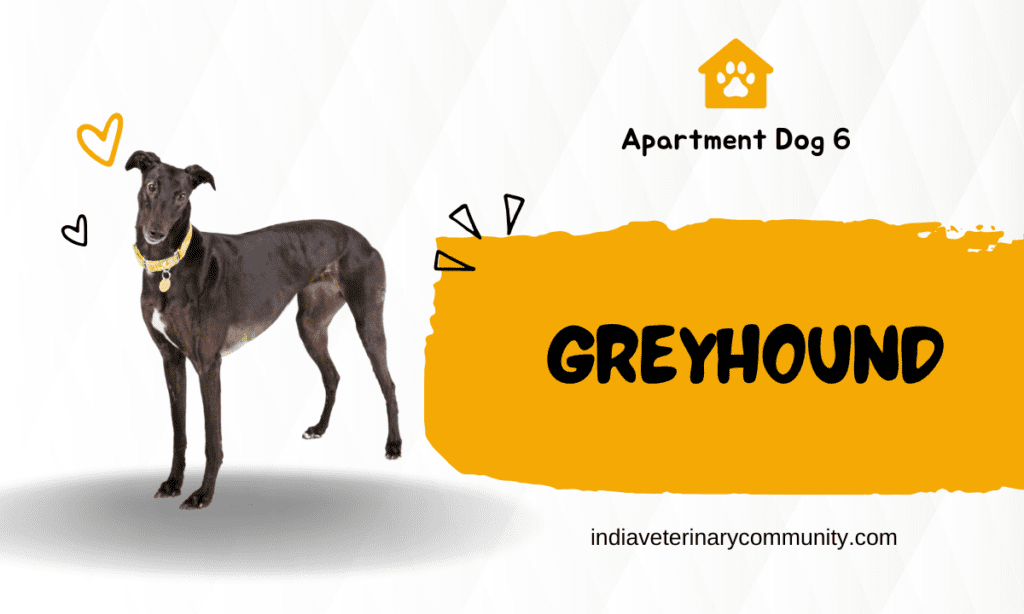
- Size: Large, usually 27-30 inches tall and 60-70 pounds
- Energy level: Low (despite their racing reputation!)
- Grooming needs: Low
- Personality: Gentle, quiet, and surprisingly lazy
- Why they’re great apartment dog breeds: Surprised? Many people are! Despite their size, Greyhounds are actually couch potatoes in disguise. They’re quiet, low-energy, and perfectly content to lounge around your apartment all day.
7. Boston Terrier
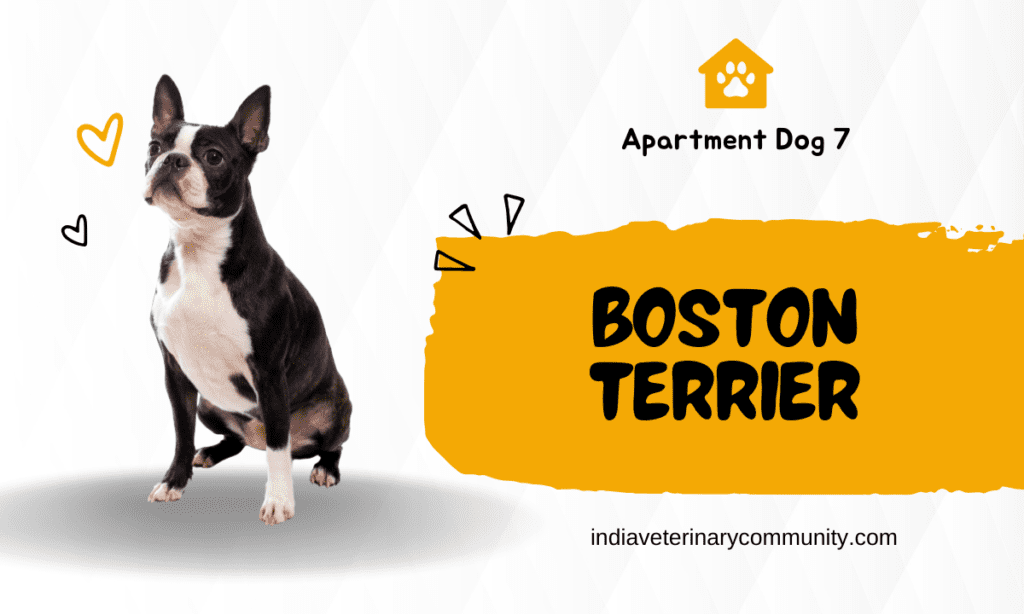
- Size: Small to medium, typically 15-17 inches tall and 12-25 pounds
- Energy level: Moderate
- Grooming needs: Low
- Personality: Friendly, intelligent, and easily trained
- Why they’re great apartment dog breeds: Boston Terriers are compact, adaptable, and generally quiet. They’re also known for being easy to train, which is a big plus in apartment living.
8. Maltese
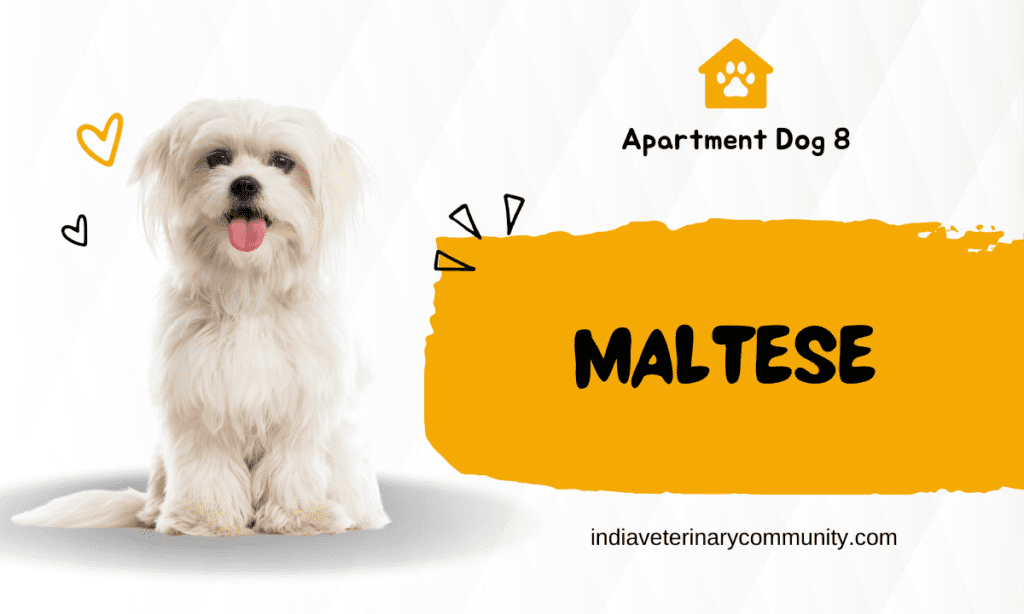
- Size: Small, usually 7-9 inches tall and under 7 pounds
- Energy level: Moderate
- Grooming needs: High
- Personality: Gentle, playful, and affectionate
- Why they’re great apartment dog breeds: These tiny pups are perfect for small spaces. They’re happy with indoor play and short walks, and their small size means they don’t need much room to roam.
9. Havanese
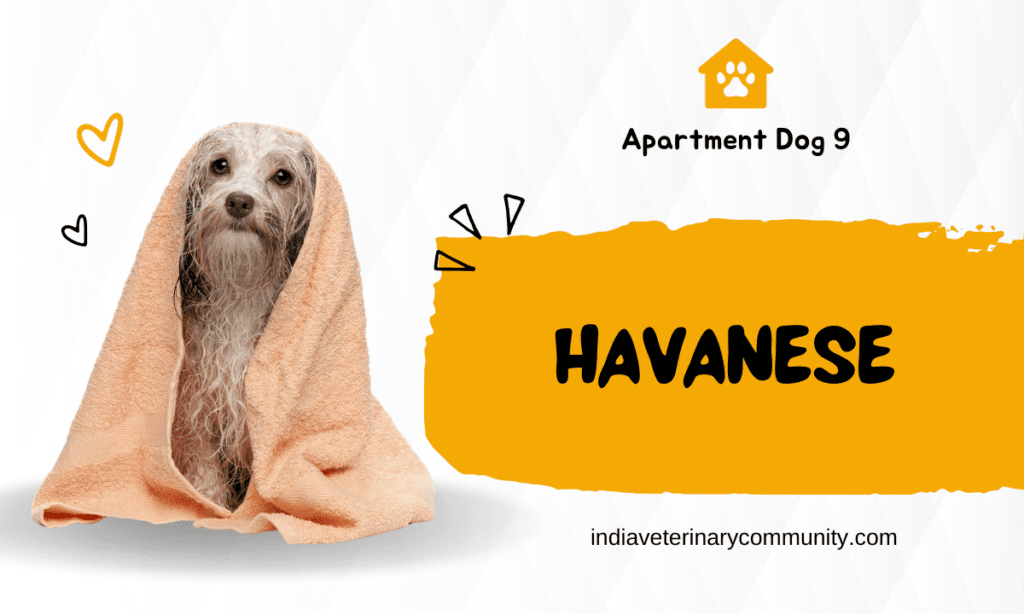
- Size: Small, typically 8.5-11.5 inches tall and 7-13 pounds
- Energy level: Moderate
- Grooming needs: High
- Personality: Intelligent, social, and easy to train
- Why they’re great apartment dog breeds: Havanese are adaptable, quiet, and love to be close to their owners. They’re content with indoor play and are known for being good with children and other pets.
10. Miniature Poodle
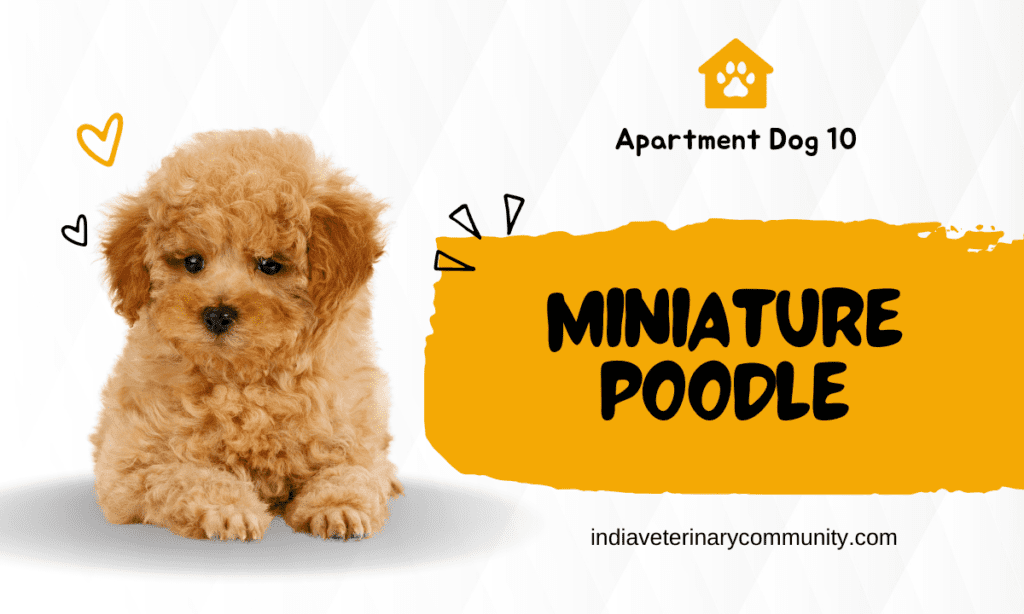
- Size: Small to medium, usually 10-15 inches tall and 10-15 pounds
- Energy level: Moderate to high
- Grooming needs: High
- Personality: Intelligent, active, and easy to train
- Why they’re great apartment dog breeds: Miniature Poodles are smart, adaptable, and don’t shed much. While they have higher energy levels, their intelligence means they can be easily trained for apartment living.
Factors to Consider When Choosing an Apartment Dog Breed
Choosing the right apartment dog breed isn’t just about picking from a list. You need to consider your lifestyle and the specific needs of both you and your potential furry friend.
Your lifestyle and activity level
- Be honest about how much time and energy you can dedicate to your dog.
- If you’re a couch potato, a high-energy breed might not be the best fit.
- Active individuals might be able to handle a more energetic apartment dog breed.
Apartment rules and restrictions
- Check your lease or building regulations for any breed or size restrictions.
- Some apartments have weight limits for pets.
- Certain breeds may be prohibited in some buildings or cities.
Time commitment for exercise and mental stimulation
- All dogs, even apartment dog breeds, need daily exercise and mental stimulation.
- Consider how much time you can dedicate to walks, play sessions, and training.
- Some breeds require more attention and interaction than others.
Grooming requirements
- Think about how much time and money you’re willing to spend on grooming.
- Some apartment dog breeds require professional grooming, while others are low-maintenance.
- Consider the impact of shedding on your small living space.
Noise tolerance of neighbors
- Be mindful of how your dog’s barking might affect your neighbors.
- Some apartment dog breeds are naturally quieter than others.
- Training can help manage barking, but it requires time and consistency.
Long-term size of the dog (puppy growth)
- Remember that puppies grow! Research the adult size of your chosen breed.
- A cute, tiny puppy might grow into a much larger adult than you anticipated.
- Consider adopting an adult dog if you’re unsure about managing a growing puppy in your apartment.
Tips for Raising a Happy Dog in an Apartment
Living with a dog in an apartment can be a joy, but it does come with its own set of challenges. Here are some tips I’ve picked up along the way for keeping your apartment dog happy and your neighbors sane:
Creating a designated dog space
- Carve out a special area just for your pup, even in a small apartment.
- Use a cozy bed, crate, or corner with their favorite toys.
- This gives your dog a sense of security and their own “territory” in your shared space.
Importance of regular exercise and outdoor time
- Even the laziest apartment dog breeds need daily walks.
- Explore your neighborhood and local parks for variety in your walks.
- Consider doggy daycare or a dog walker if you’re away for long hours.
Mental stimulation games for apartment dog breeds
- Use puzzle toys and treat-dispensing games to keep your dog’s mind active.
- Practice obedience training or teach new tricks for mental exercise.
- Rotate toys to keep things interesting and prevent boredom.
Socialization in urban environments
- Expose your dog to different sounds, sights, and experiences in the city.
- Arrange playdates with other apartment dog breeds in your building or neighborhood.
- Visit pet-friendly cafes or stores to practice good behavior in public spaces.
Potty training challenges and solutions
- Consider using pee pads or artificial grass for emergencies or late-night needs.
- Establish a consistent potty schedule to prevent accidents.
- Be patient and positive during the training process – it might take longer in an apartment setting.
Common Myths About Apartment Dog Breeds
Some common myths about apartment dog breeds! These misconceptions often prevent people from finding their perfect apartment companion.
Myth 1: “Only small dogs are good apartment dog breeds” Reality: While small dogs are often great for apartments, some larger breeds like Greyhounds can be excellent apartment dwellers due to their calm nature and low energy levels.
Myth 2: “Apartment dogs don’t need much exercise” Reality: All dogs need regular exercise, regardless of their living situation. Even apartment dog breeds require daily walks and playtime for their physical and mental well-being.
Myth 3: “All apartment dog breeds are yappy” Reality: Many small breeds often associated with apartments are actually quite quiet. Breed research and proper training can help ensure a peaceful living environment.
Myth 4: “You can’t have a large dog in an apartment” Reality: Some large breeds, like the aforementioned Greyhound, can adapt well to apartment living. It’s more about the dog’s energy level and temperament than its size.
Preparing Your Apartment for a Dog
Before bringing your new furry friend home, it’s important to prepare your apartment for their arrival. Here are some key steps to take:
Dog-proofing your small space
- Remove or secure any potentially dangerous items.
- Hide electrical cords and small objects that could be chewed.
- Consider baby gates for areas you want to keep dog-free.
Essential supplies for apartment dog breeds
- Invest in a comfortable bed or crate for your dog’s designated space.
- Stock up on appropriate toys for indoor play.
- Don’t forget food and water bowls, a leash, and collar with ID tags.
Creating a comfortable sleeping area
- Choose a quiet corner for your dog’s bed or crate.
- Make it cozy with blankets and a favorite toy.
- Consider the temperature and draft in the chosen spot.
Setting up an indoor potty solution
- For small apartment dog breeds or puppies, consider pee pads or an indoor grass patch.
- Place the potty area in a consistent, easily accessible spot.
- Be prepared for accidents during the training period and have cleaning supplies on hand.
Conclusion
Living with a dog in an apartment can be an incredibly rewarding experience. From the snuggly French Bulldog to the surprisingly apartment-friendly Greyhound, there’s an apartment dog breed out there for everyone. Remember, the key to successful apartment living with a dog isn’t just about choosing the right breed – it’s about understanding your lifestyle, your dog’s needs, and being committed to providing the best care possible in your urban environment.
As you embark on your journey to find the perfect apartment dog breed, keep in mind that every dog is an individual. While breed characteristics can guide you, it’s important to meet and interact with potential pets before making a decision. Don’t forget to consider adopting from local shelters or rescue organizations – you might just find your perfect apartment companion waiting for a forever home!
Remember that with proper care, attention, and love, almost any dog can thrive in an apartment setting. It’s all about creating a nurturing environment and being a responsible pet owner. So, are you ready to welcome a furry friend into your apartment? The joys of dog ownership are waiting for you, no matter the size of your living space!
We’d love to hear about your experiences with apartment dog breeds. Have you found the perfect pup for your urban lifestyle? Share your stories, tips, and photos in the comments below. Let’s celebrate the joys of apartment living with our canine companions!



